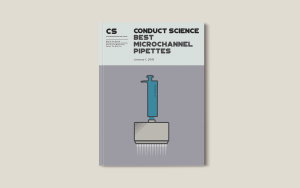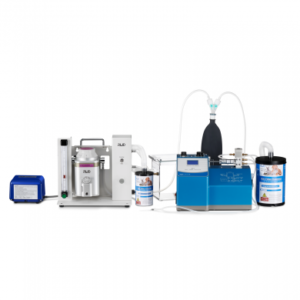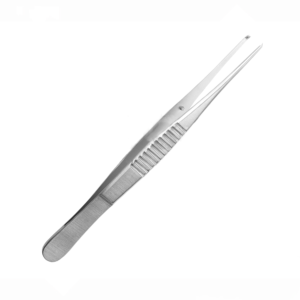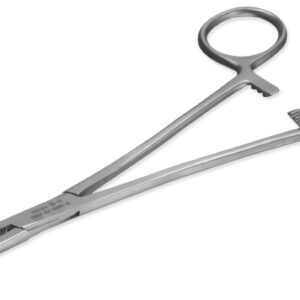Pre-market Approval for Medical Devices: Introduction
The US is the largest market for medical devices, worth approximately $156 billion (as of 2017), and is expected to reach $208 billion by 2023. Given these numbers, it’s no surprise that high-risk medical devices must undergo strict regulatory and approval processes. One of them is the pre-market approval (PMA) for medical devices.
The pre-market approval for high-risk medical devices guarantees that medical devices are safe and effective at the same time. This pathway also ensures that high-risk devices can reach the public adequately in order to improve health outcomes and save lives.
The History of Pre-market Approval for Medical Devices
The medical device market is expanding and improving constantly. Medical device regulations have also changed significantly over the last decades. The pre-market approval for medical devices gained popularity in the 80s after the notorious intrauterine contraceptive device Dalkon Shield was found to lead to inflammation, miscarriage, and fatalities (Rome et al., 2014).
To be more precise, in 1976, new amendments to the Food, Drug, and Cosmetic Act of 1938 widened the role of the US Food and Drug Administration (FDA) in medical device testing, with the Center for Devices and Radiological Health being the main body responsible for medical device review.
Similar to the strict FDA drug regulations, the 1976 Medical Device Amendments now enforces medical device manufacturers to follow strict testing, marketing, and surveillance procedures. It is worth noting that designing and marketing a medical device can take from three to seven years, as opposed to the burdensome process of drug approval which can last 10-15 years (Purnama & Drago, 2019).
Regulatory Processes & Pre-market Approval for Medical Devices
When a new medical device is required as a solution to a health problem, this device undergoes a cycle of research, animal testing, preclinical trials, and redesign. After that, the device has to be classified, approved through a specific pathway, and registered by the FDA.
Depending on its classification, any novel device can go through one of the following regulatory pathways: pre-marketing notification, pre-market approval, or the humanitarian device exemption. We should note that Class I devices (e.g., bandages) do not fall under any pre-market notification or quality system requirements. On the other hand, Class II devices (e.g., powered wheelchairs) require pre-marketing notification or a 510(k) submission.
The pre-market approval process of Class III devices is the most rigorous pathway. It requires in-depth clinical evaluations on safety and effectiveness before manufacturers can register high-risk devices. Interestingly, the humanitarian device exemption also requires devices to be safe but does not require data on effectiveness. Note this pathway encourages the design of devices for rare conditions – in fewer than 4,000 people per year.
Here we should note that post-market data and post-approval surveillance are also needed to ensure high effectiveness and safety for some high-risk devices. For instance, 522 post-market surveillance studies may be required for life-supporting devices implanted for more than a year (Rome et al., 2014).
The Pre-market Approval Application Explained
The pre-market approval is the most stringent regulatory pathway for medical devices in the US. As stated above, it’s used to guarantee the safety and effectiveness of Class III devices. The pre-market approval application requires detailed clinical information and should be scientifically sound.
It’s worth noting that the technical sections are crucial for a device to be approved. These sections can be divided into non-clinical lab studies (e.g., immunology, animal tests, shelf life) and clinical investigations (e.g., study protocols, device failures, patient information, statistical analysis). Like any other study report, applications should be well-organized and in compliance with recommended practices and industry standards
Pre-market Approval for Implantable Cardiac Monitors
When it comes to high-risk devices, we should note that such medical devices are widely used in cardiac care. Implantable cardiac monitors, for example, are among the medical devices that must undergo the pre-market approval process to evaluate their safety and effectiveness.
We should note that implantable cardiac monitors are defined as electrophysiology devices used to detect electrical activity and arrhythmias. Such devices are inserted under the skin and are used for long-term monitoring.
Alarmingly, heart disease is the leading cause of death in the US. As both cardiologists and patients should be aware of the data that supports the use of such devices, regulatory bodies must ensure high transparency regarding risks and effectiveness. For instance, electromagnetic compatibility around other electronic devices should be stated clearly. When it comes to improvements to a medical device, data on comparative effectiveness is also crucial.
Pre-market Approval for Insulin Pumps
Another global health problem is diabetes, defined as the fastest growing chronic condition. Alarmingly, the number of patients with diabetes is rising; 422 million patients were registered in 2014, and it’s expected that these numbers will double by 2040 (Zhang et al., 2019).
Insulin pump therapy or continuous subcutaneous insulin infusion is one of the most important treatments for people with diabetes Type I, as well as Type II. In fact, this type of treatment shows positive glycogenic management and clinical outcomes.
While some insulin pumps are classified as Class II devices, those parts of an integrated system is Class III devices. Thus, these devices have to undergo strict pre-market approval to prevent risks, such as pump failure and insulin infusion blockage (Heinemann et al., 2014). Interestingly, data shows that the US FDA approved 2005 2018, 15 Class III devices for diabetes treatment.
Given the fact that the integration of science and technology is fundamental in foreign policy, it’s no surprise that the US is one of the countries that are willing to develop evidence-based policies and develop connections with other states seeking scientific progress. To provide an example, in 2015, the State Department established an Innovation Forum to connect with partners from Silicon Valley and other innovation centers (Turekian & Kishi, 2007).
Scientific methods are rapidly integrated into foreign affairs decision-making, while bilateral and multilateral meetings are regularly organized to tackle international concerns. To support governments around the world, not only in the US, scientists should be encouraged to work with each other to expand the world of scientific progress and tech innovation.
High-risk Medical Devices Implanted in Children
While the pre-market approval of medical devices guarantees a device’s safety and effectiveness, not many have been approved specifically in pediatric settings. Here we should note that the 2007 Pediatric Medical Device Safety and Improvement Act aims to stimulate pediatric medical device development.
Yet, figures show that most medical devices haven’t been studied in patients under 18 years of age. Hwang et al. (2014), for instance, identified 22 devices approved between 2008 and 2011 for use in children via the pre-market approval process and three via the humanitarian device exemption pathway. However, 88% had minimum approval ages of 18-21 years.
The Pre-market Approval Process: Future Considerations
While pre-market approval is crucial to ensuring a device’s safety and effectiveness, practitioners should be aware of the process. For instance, many medical devices have been approved as supplements to existing devices without clearly stated improved effectiveness data (Rome et al., 2014). Note that this pre-market approval supplement pathway may be used to approve evolving technologies supported by limited data, so health practitioners should be highly cautious.
Patients should also be aware of potential dangers, as well as their legal rights. Note that the 2008 Riegel vs. Medtronic ruling makes it difficult for patients to seek damages from manufacturers of high-risk devices. Here we should give some more information about this ruling; after a balloon catheter caused damage during an angioplasty procedure, the Riegels sued the catheter’s manufacturer, Medtronic, but the Court dismissed the case.
When it comes to regulations, standards should be harmonized across the world at both- pre and post-marketing stages. Therefore, international databases and annual reports are needed to improve interoperability and boost scientific progress.
Pre-market Approval for Medical Devices: Conclusion
Medical devices are essential to ensure patient safety and health. There are different types of devices used to diagnose, treat, and monitor patients. In the US, in particular, medical devices are classified as Class I, Class II, and Class III devices according to their risk levels.
Class III devices are defined as high-risk devices and are deeply integrated into cardiac care and diabetes treatments. As such, they have to undergo strict regulatory and testing processes before they get approved. The pre-market approval process is the most rigorous pathway used to ensure that Class III devices are safe and effective.
Both patients and health practitioners should be aware of the regulatory pathways used to approve new medical devices. When it comes to pediatric care, for instance, the development of high-risk medical devices requires additional consideration and care.
Although the US is the largest market for medical devices – with the pre-market approval process being crucial to ensuring a high-risk medical device safety and effectiveness – international collaboration and transparent data are needed to support interoperability, scientific progress, and human health.
References
- Heinemann, L., Fleming, G., Petrie, J., Holl, R., Bergenstal, R., & Peters, A. (2015). Insulin pump risks and benefits: a clinical appraisal of pump safety standards, adverse event reporting and research needs. A Joint Statement of the European Association for the Study of Diabetes and the American Diabetes Association Diabetes Technology Working Group. Diabetologia, 58, 862-870.
- Hwang, T., Kesselheim, A., & Bourgeois, F. (2014). Post-marketing Trials and Pediatric Device Approvals. Pediatrics, 133 (5), p. 1197-1202.
- Purnama, A., & Drago, D. (2019). Medical devices: FDA regulatory pathways for medical devices.
- Rome, B., Kramer, D., & Kesselheim, A. (2014). Approval of High-Risk Medical Devices in the US: Implications for Clinical Cardiology. Current Cardiology Reports, 16 (6).
- Zhang, B., Shankara, S., Ye, S., & Zhang, H. (2019). Design and analysis of high-risk medical device clinical trials for diabetes monitoring and treatment: a review. Journal of Pancreatology, 2 (4), p.123-130.












